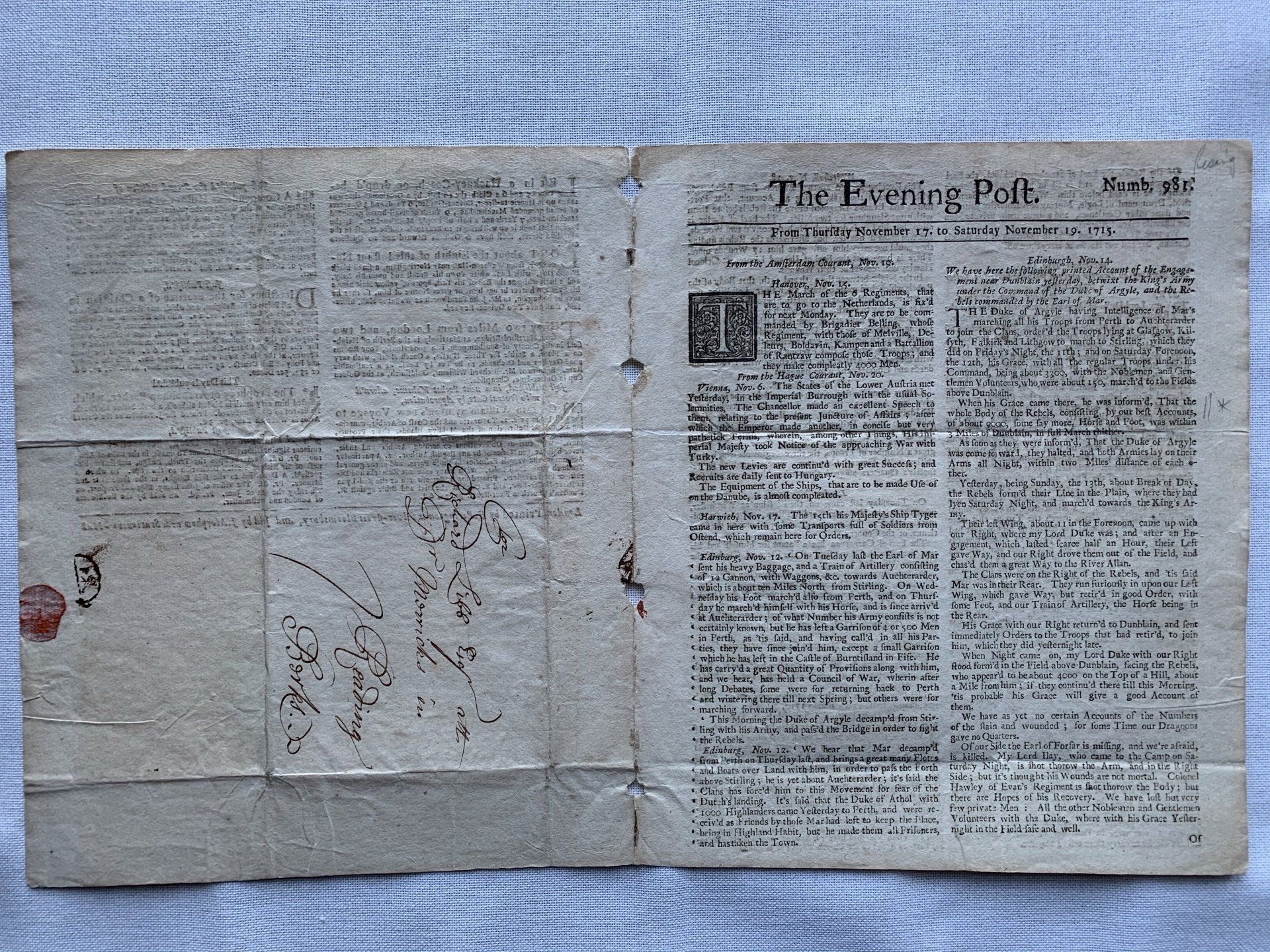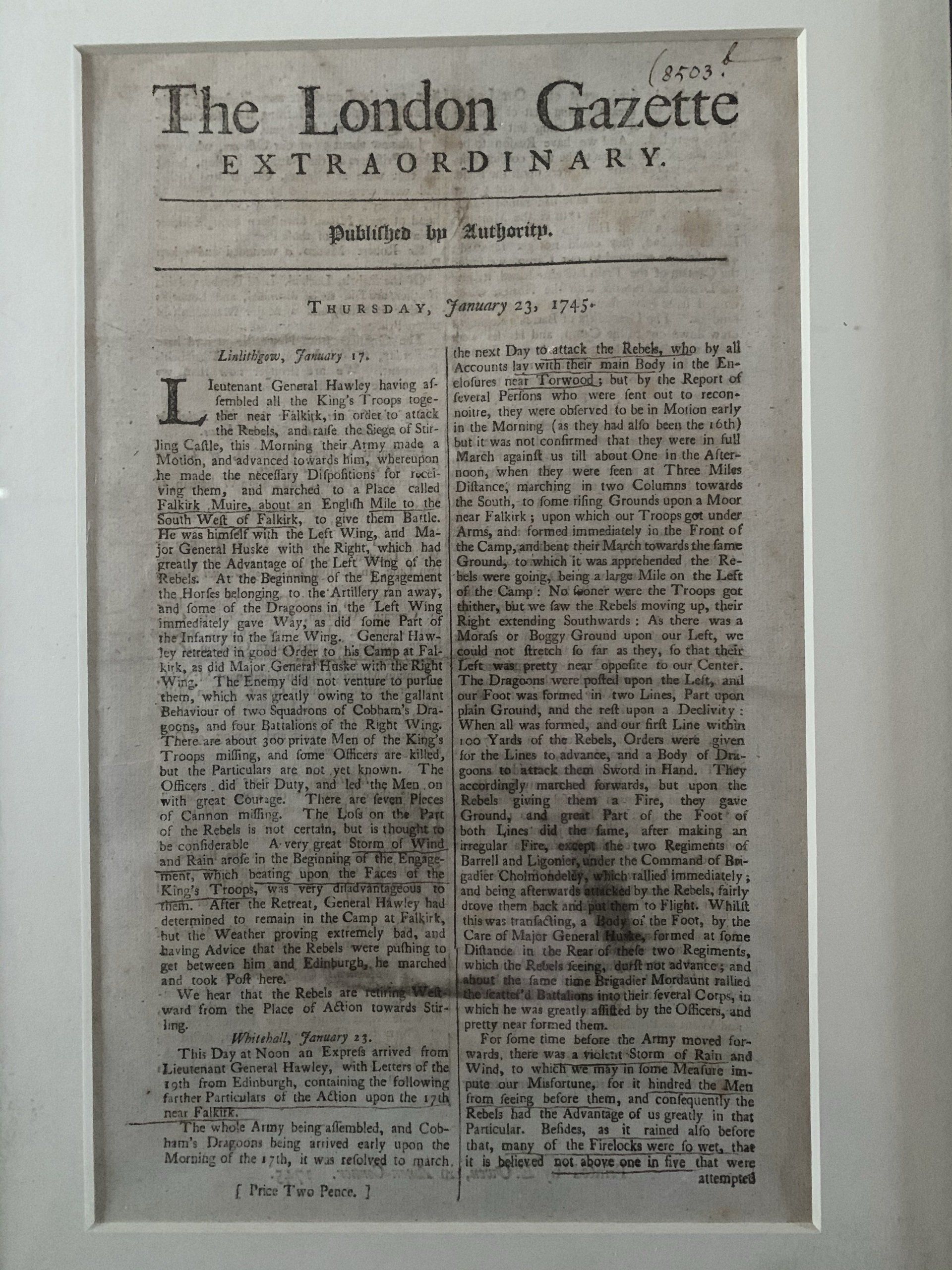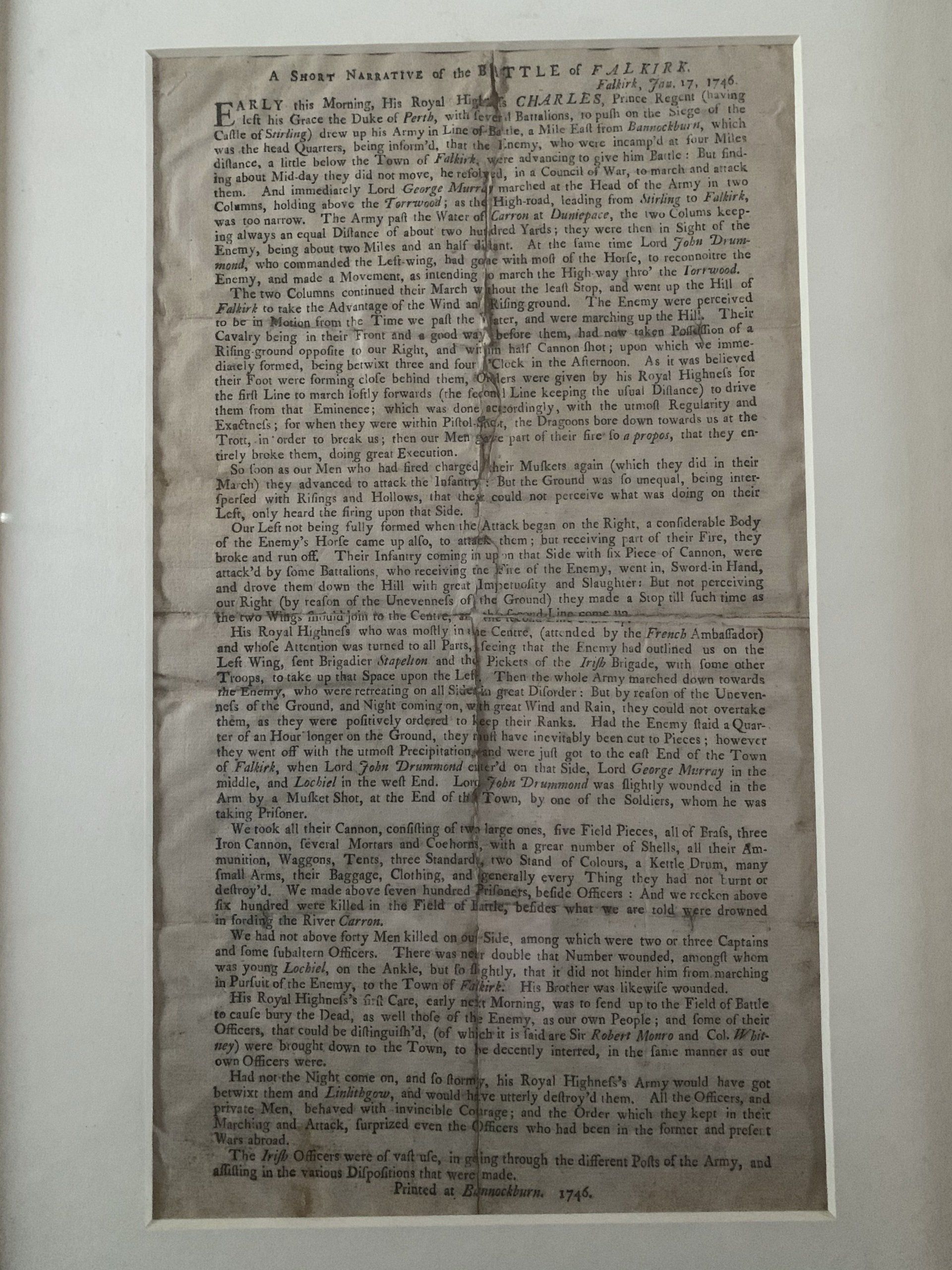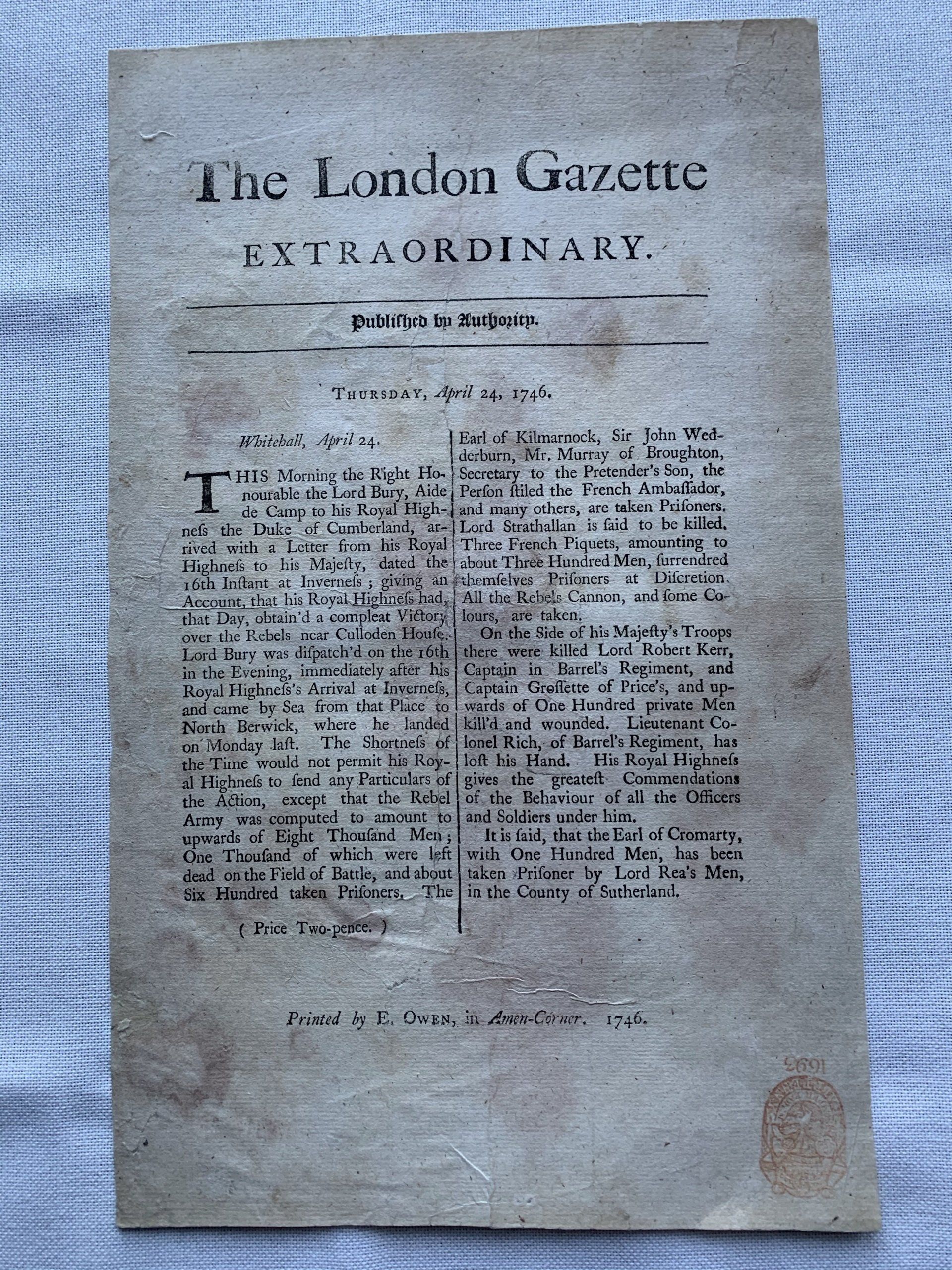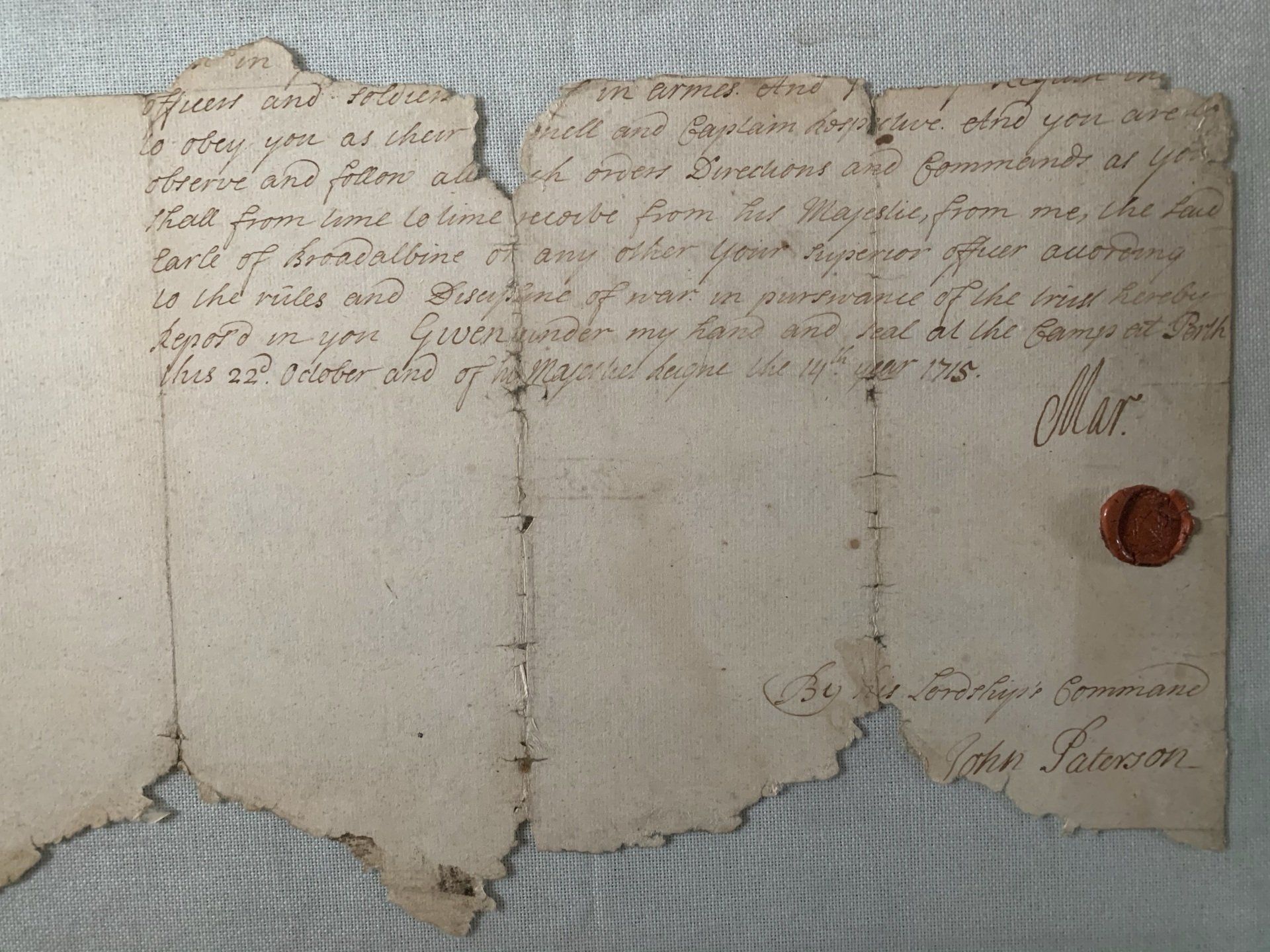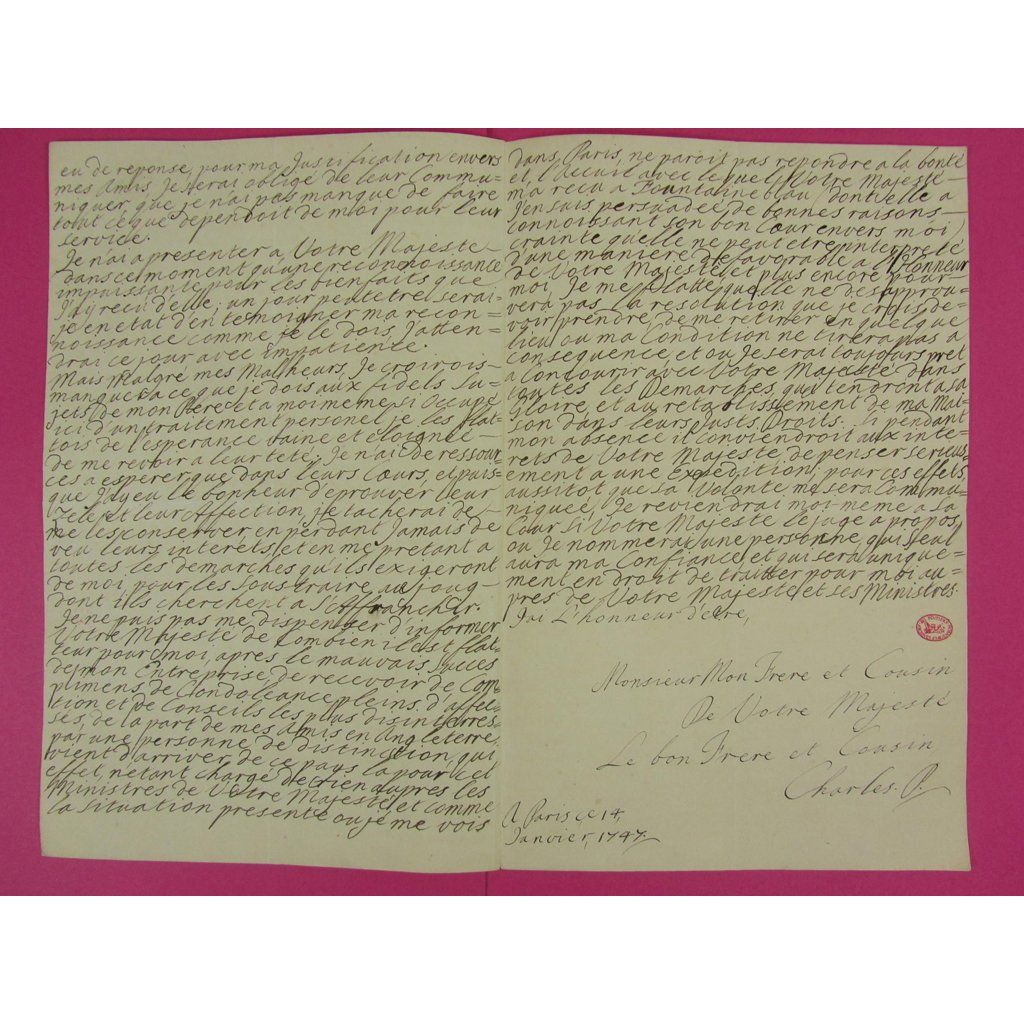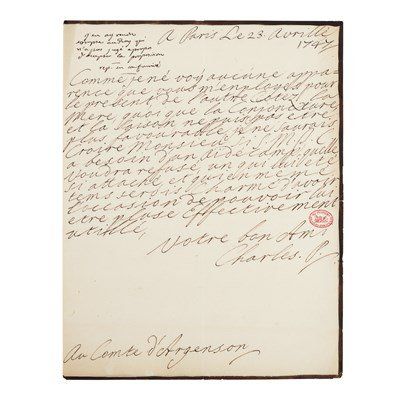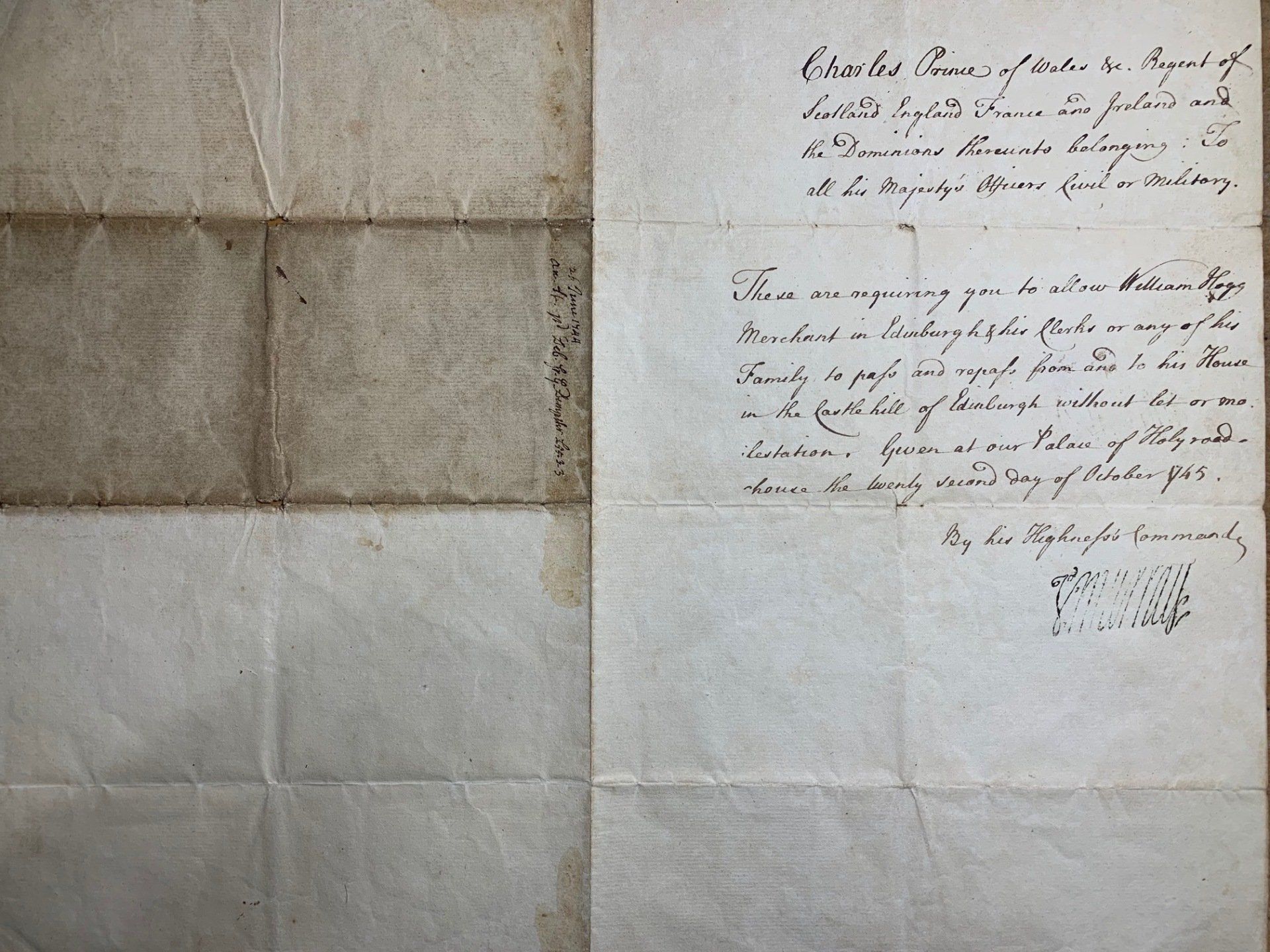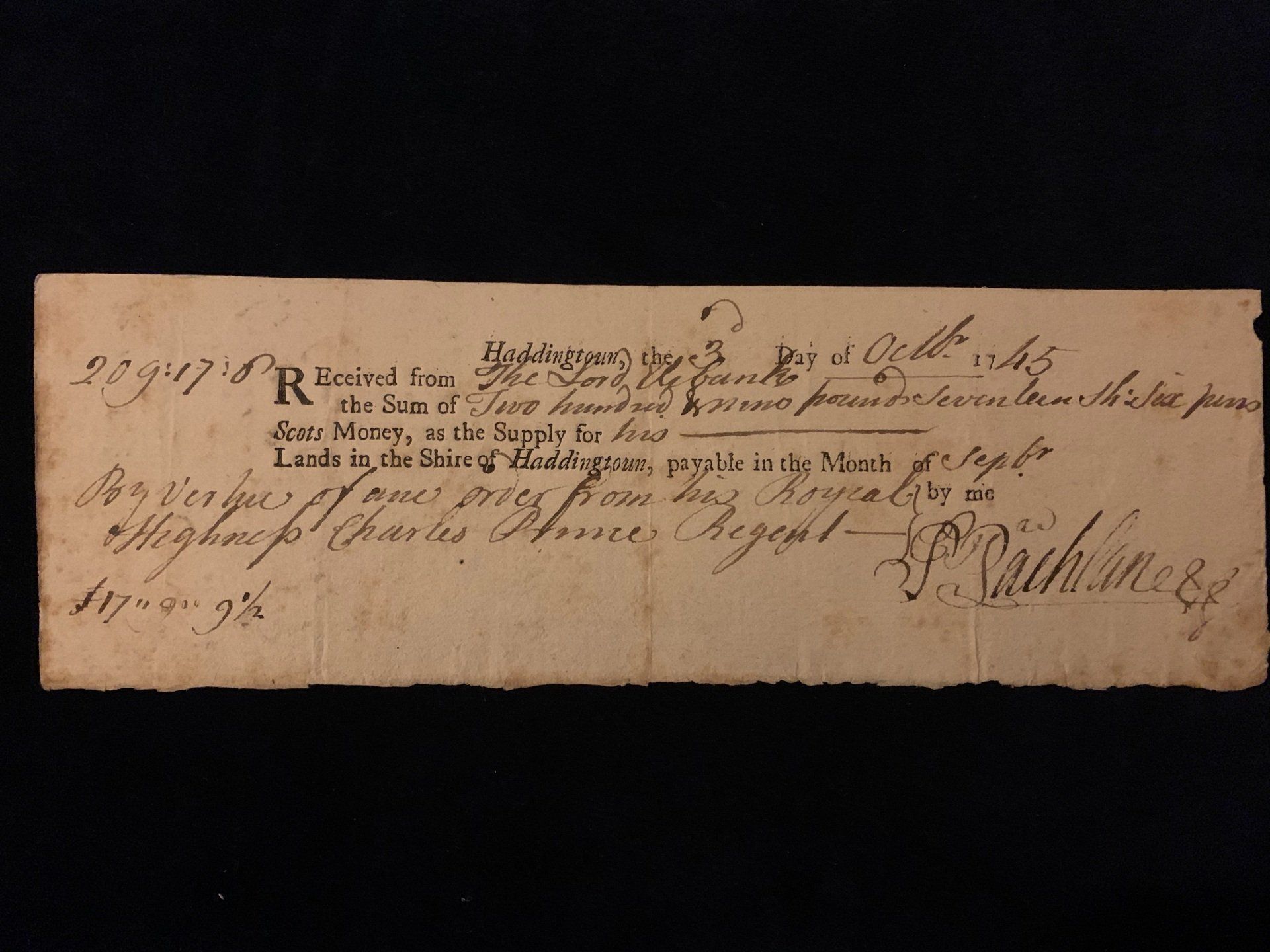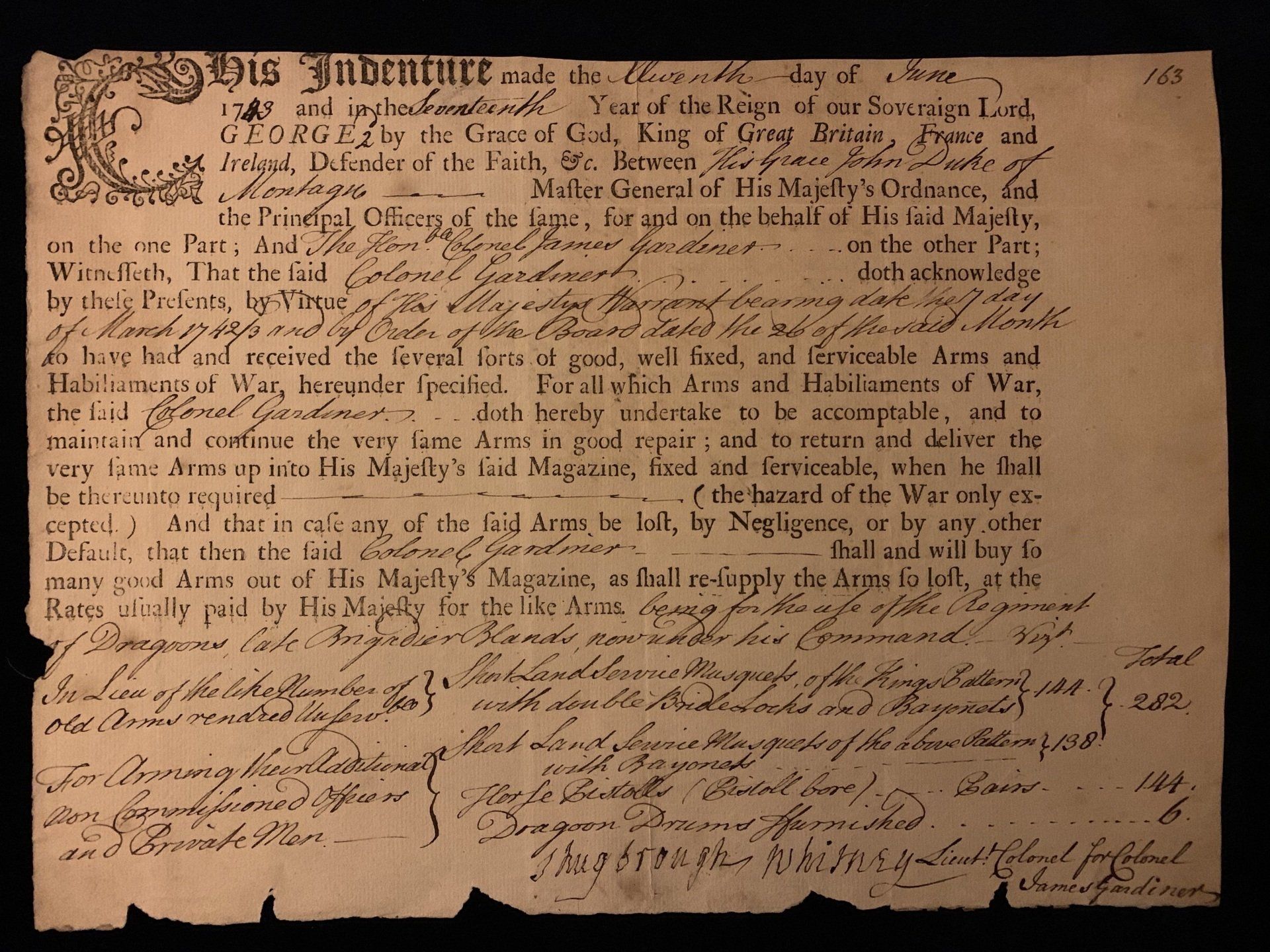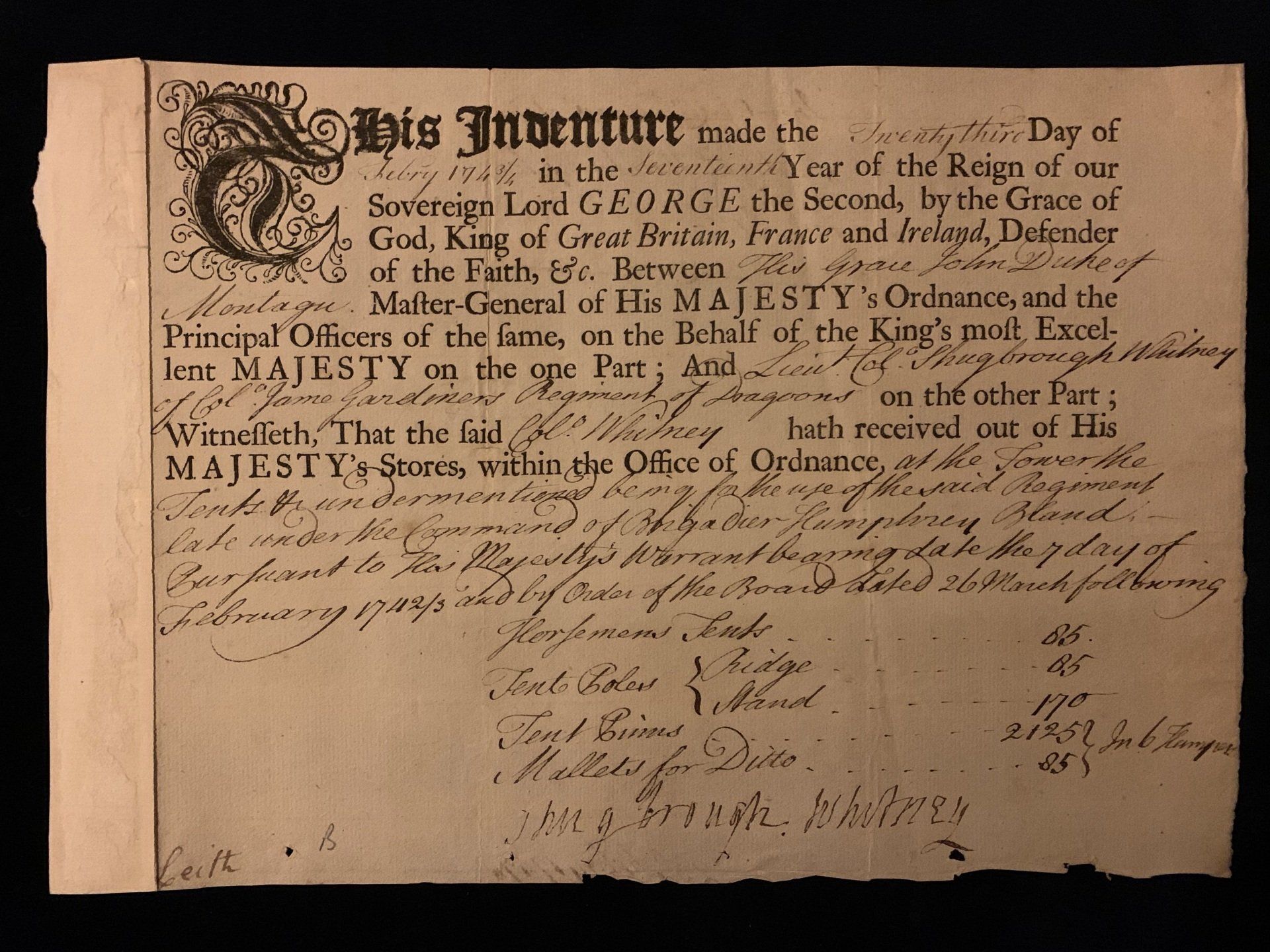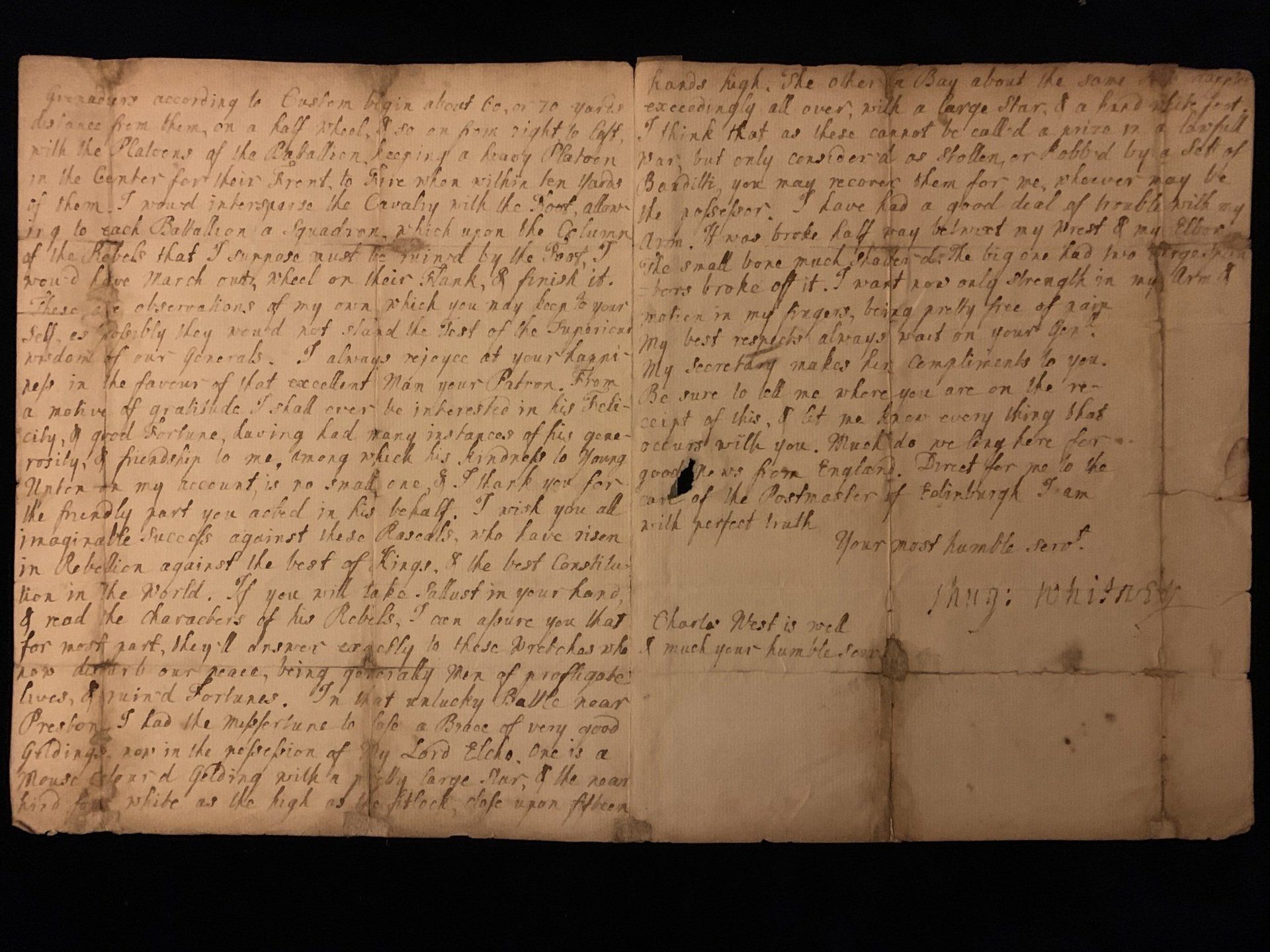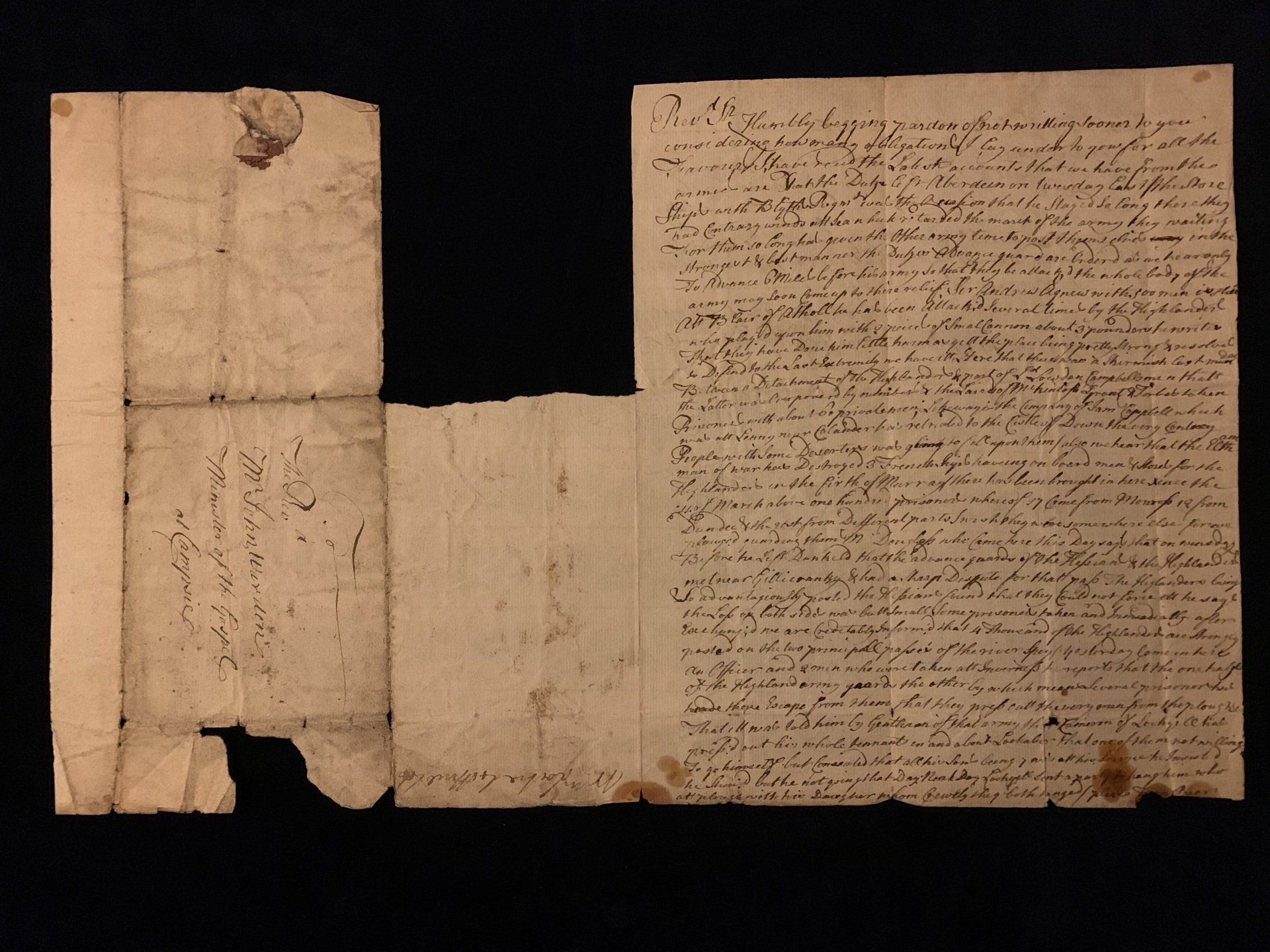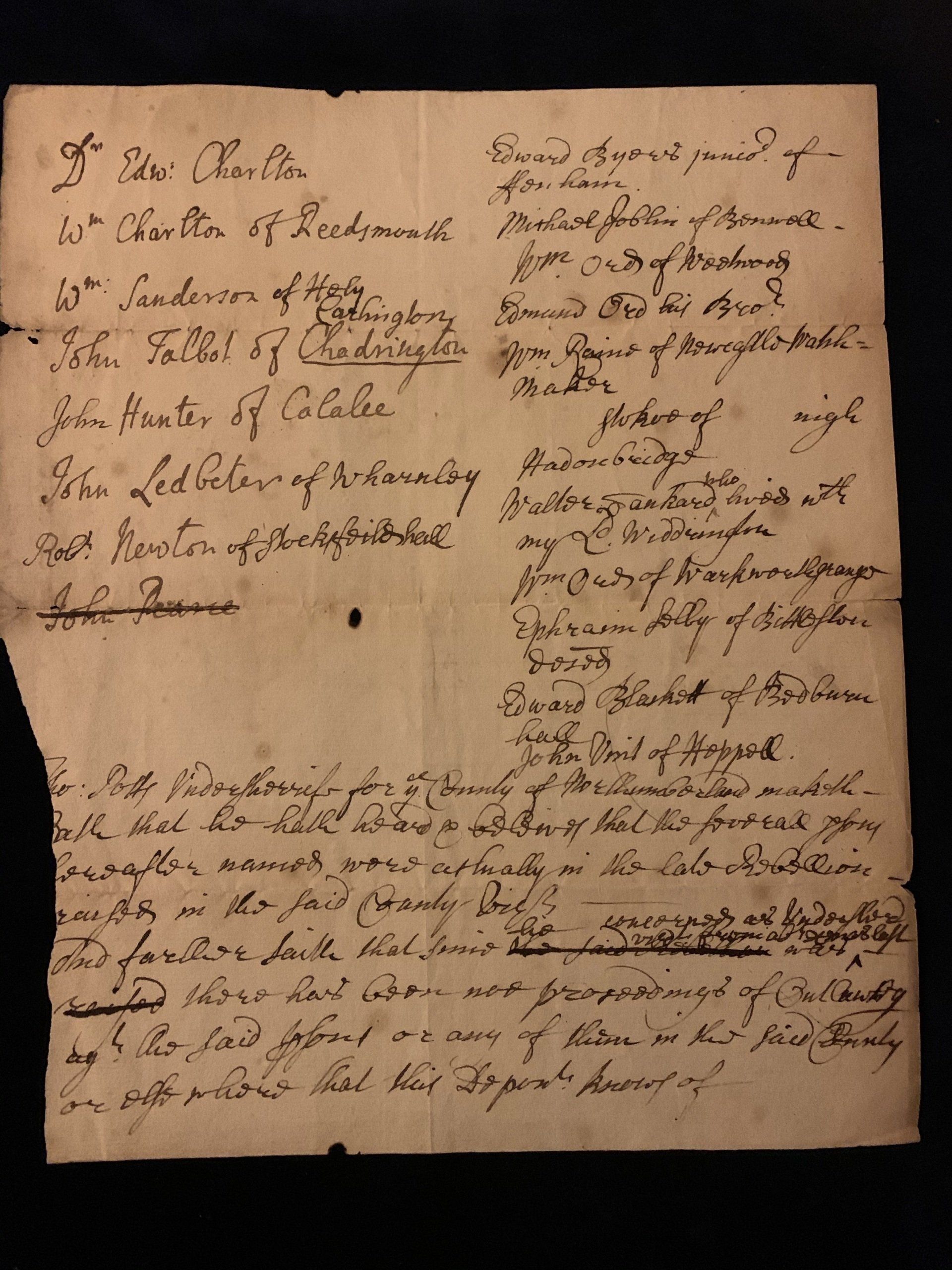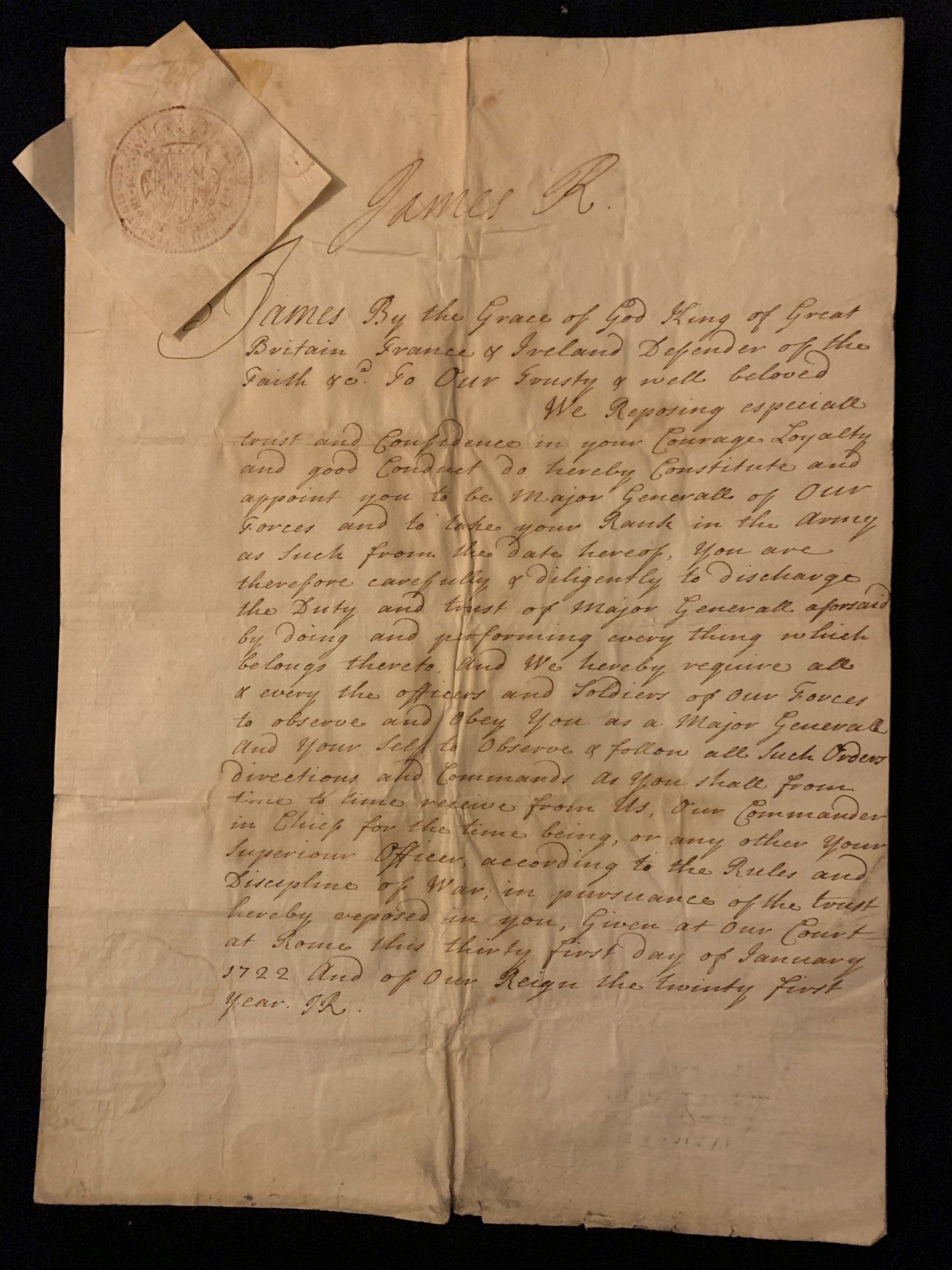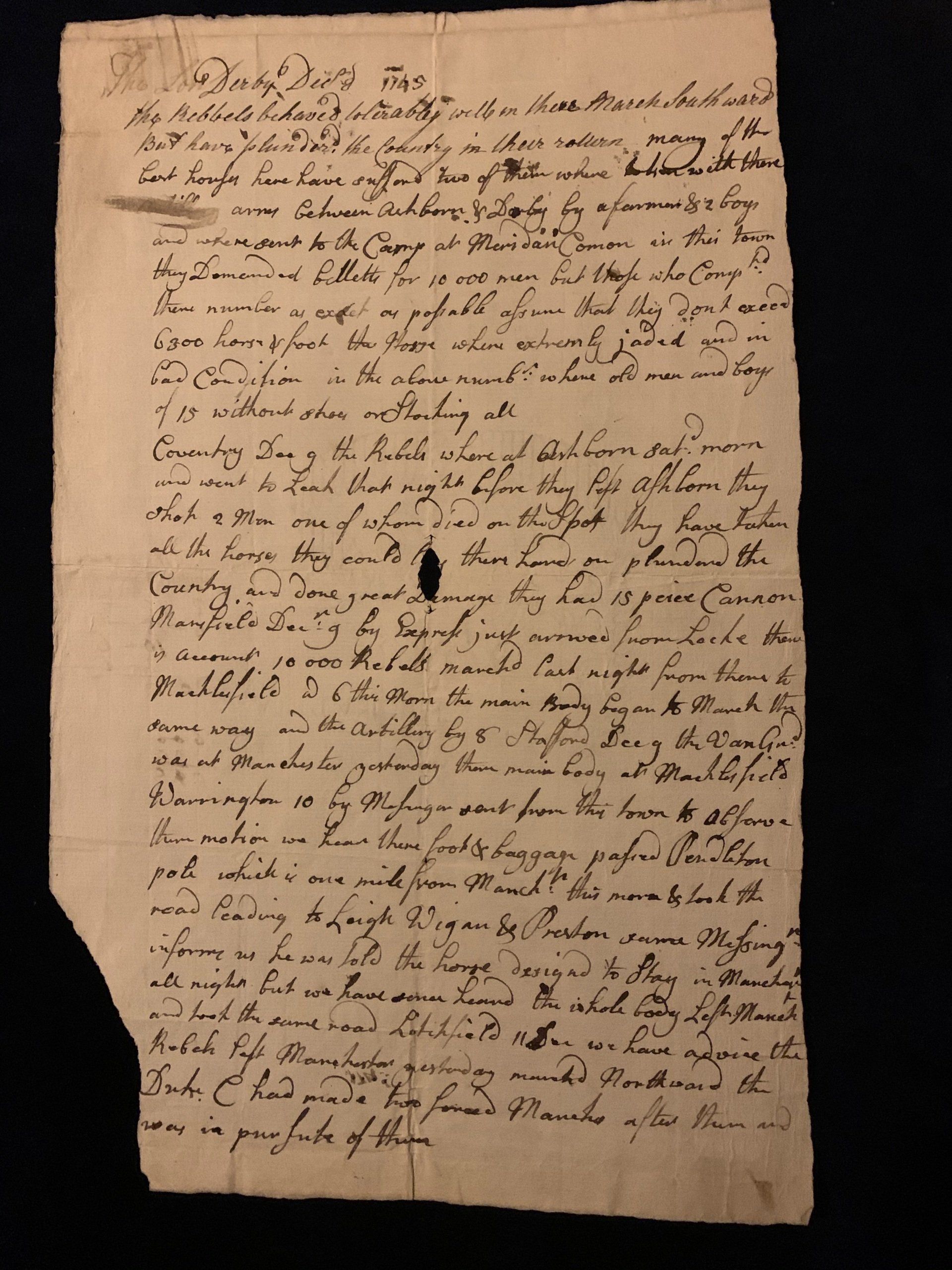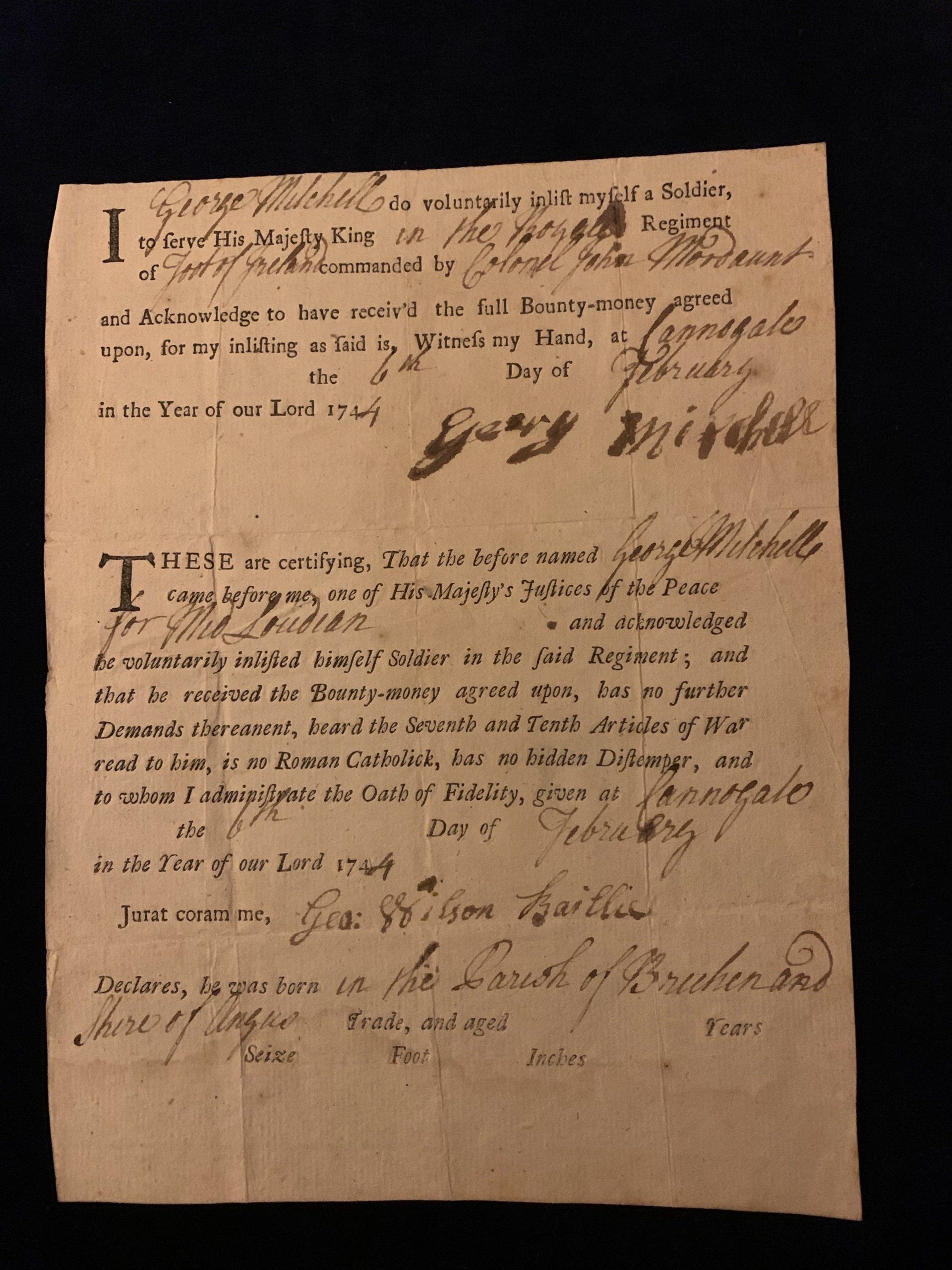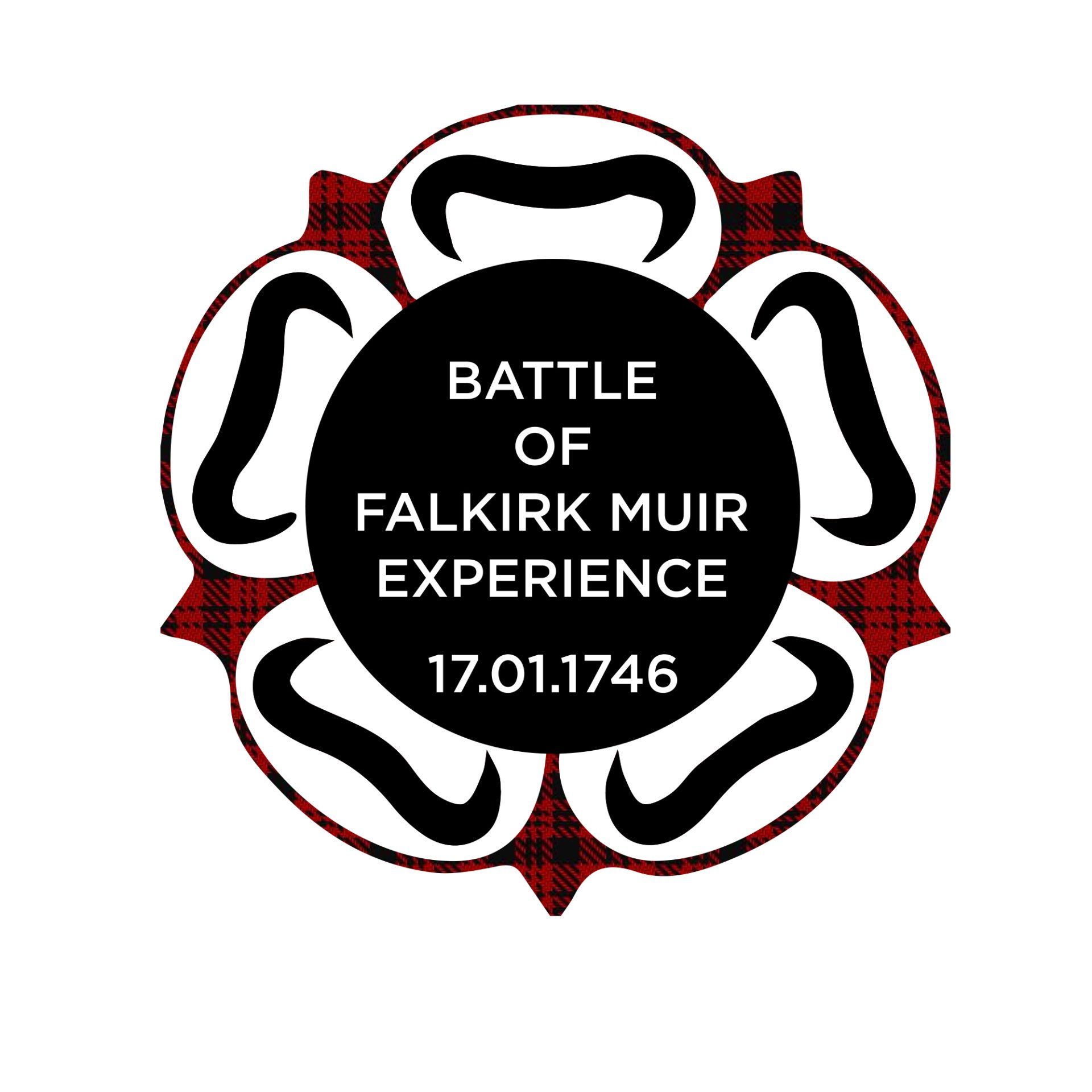Room 4 - Gallery of Printed Works
Read all about it - Battle of Sheriffmuir
This Evening Post from Thursday 17th to Saturday 19th November 1715 reports on the Battle of Sheriffmuir that was fought on the previous Sunday.
Added 13 January 2021.
Read all about it - Battle of Prestonpans
This The Penny London Post from Wednesday 2nd to Friday 4th October 1745 reports on the Battle of Prestonpans that was fought on Saturday the 21st September.
Added 13 January 2021.
Read all about it - Battle of Falkirk Muir
This Extraordinary edition of the London Gazette from Thursday 23rd January 1745 reports on the Battle of Falkirk Muir that was fought on the previous Friday
As it is an English based paper the year is shown as 1745 as the English new year did not start until the 26th. The year was 1746 in Scotland. Also the news is very much biased to the British Army. Indeed it makes out that the British army won the battle.
Added 13 January 2021.
Read all about it - Battle of Falkirk Muir
This paper was printed by order of Prince Charles on a press based in Bannockburn on the 17th January 1746, the day of the battle. It's reports on the battle is different from the report in the London Gazette as it biased towards the Jacobite perspective. However, the reported number of casualties are closer to what we believe to be true.
Added 13 January 2021.
Read all about it - Battle of Culloden
This Extraordinary edition of the London Gazette from Thursday 24th April 1746 reports on the Battle of Culloden that was fought on
Wednesday 16 April 1746.
Added 13 January 2021.
Marr Appoints Captain Paterson
This document is signed and stamped by the Earl of Marr, the commander of James VIII's army in Scotland. It appoints John Paterson as Captain in his forces. It was signed at the Jacobite camp in Perth on 22nd October 1715 three weeks before the Battle of Sheriffmuir.
Added 13 January 2021.
13 January 1747
Prince Charles Edward Stuart
Letter dated 13th January 1747
This very important letter, written a couple of months after he had returned to France from Scotland, is written and signed by Prince Charles. It is addressed to his Cousin Louis XV.
In the letter he begs Louis to lend him support to invade England and states the time is right for an invasion.
Importantly this letter goes a very long way to proving that Charles was acting in good faith when he said to his loyal supporters that he was going to France in order get support from Louis and he would return with French troops.
Sometimes, Charles has been portrayed as only trying to save his own skin, rather than being willing to risk his life in another attempt at securing his Father's throne.
Added 31 December 2020
23 April 1747
Prince Charles Edward Stuart
Letter dated 23rd April 1747
This letter is written and signed by Prince Charles. It is addressed to his Cousin Louis XV.
In it he asks Louis if he could act as his Aide-de-camp in Louis' forthcoming campaign in Flanders against the British.
This would infer that either Charles had come to terms with Louis not being prepared to lend him any support to invade England, or alternatively, he may have seen that by becoming ADC to Louis he would get access to the King and he might have the opportunity to persuade him to change his mind.
Either way, the letter has a note written on the top left hand corner by Louis' Minister of War the Comte d'Argenson noting that Louis declined Charles' offer.
Added 31 December 2020
The Fox
Simon Fraser, 11th Lord Lovat was nicknamed 'The Fox' due his constant changing of sides between supporting the British Government and The Jacobite Court of King James VIII.
In the end he raised Clan Fraser in support of James during the '45. His son, the Master of Lovat fought at both Falkirk Muir and Culloden.
This letter signed by Lovat is dated 10th March 1744. It describes a meeting he had at his castle with the Lord President, Duncan Forbes of Culloden who was the British Government's representative in Scotland.
Added 30 December 2020
Cumberland's Map 1745
This map of the 'North of Britain' dated 1745 was surveyed by Elphinstone and dedicated to the Duke of Cumberland.
It was the most detailed and accurate map of it's time and it would have been an invaluable aid for the British Army enabling the Forces to move around the country.
Added 30 December 2020
Edinburgh Castle Siege
During the Jacobite occupation of Edinburgh during October 1745 the one place they did not control was the castle.
As Prince Charles' army did not have any heavy canon it was decided that the army should surround the castle to stop food and supplies entering the castle. This was done at some inconvenience to the townsfolk who lived near by.
This document is a pass signed at Holyrood House by Prince Charles' secretary, Sir John Murray of Broughton. It was issued to William Hogg on 2nd October 1745 and permitted him and his family free movement to and from his house on Castle Hill.
Added 13 December 2020
"We want your money - please"
In order to pay his army Prince Charles sent out men to demand money from the landed gentry. This was called Cess tax.
To make this tax demand appear legitimate the men collecting the money issued signed receipts.
This receipt is for the collection of £209 17/6d from a Lord Elibank who lived in Haddingtonshire on 3rd October 1745. This would be equivalent to £25,000 in today's money.
The receipt is signed by clan chief Lachlin Maclachan who was killed six months later fighting at Culloden.
Added 13 December 2020
"I require some muskets"
This requisition note for 282 muskets and bayonets together with 6 Dragoon drums was drawn up and signed by Colonel Shugborough Whitney to equip Gardiner's Dragoons.
These weapons were used during the Battle of Prestonpans on 22nd September 1745 when Colonel Gardiner was killed and Colonel Whitney was injured and taken prisoner.
Added 7 December 2020
"And we need some tents"
This requisition note is for 85 tents and mallets and 2,125 tent pegs was drawn up and signed by Colonel Shugborough Whitney for the use of Gardiner's Dragoons.
Most likely these items were left with the baggage train after the British Army's defeat at the Battle of Prestonpans on 22nd September 1745. Colonel Gardiner was killed during the battle and Colonel Whitney was injured and taken prisoner. Later Whitney fought and was killed during the Battle of Falkirk Muir.
Added 7 December 2020
"We had the Muskets and Tents but we still lost the battle"
This letter was written by Colonel Shugborough Whitney a few weeks after the British Army''s defeat at the Battle of Prestonpans on 21st September 1745.
Whitney fought in Gardiner's Dragoons and was injured and taken prisoner. He wrote this account of the battle while on Parole in Edinburgh.
In the letter he describes the damage the musket ball did to his arm and describes Prince Charles' army as 'Rascals who have risen in Rebellion against the best of Kings, & the best Constitution in the world'
Whitney recovered sufficiently from his injury and broke his Parole undertaking to fight with Ligoniers Dragoons at the Battle of Falkirk Muir where he was killed. He is buried in Falkirk Church graveyard.
Added 7 December 2020
"I've lost my baggage and I've not been paid"
This letter is dated 14th March 1745. However at that time in England the new year did not start until the 26th March therefore we would recognise the date as 14th March 1746, eight weeks after the Battle of Falkirk.
It is written by Lord Somerville in Edinburgh to William Adair in London. In it he writes that his son Lieutenant Somerville, who was ADC to Henry Hawley, had lost all his baggage at Falkirk and had not received his wages.
Added 7 December 2020
Blair Castle Siege
During the second half of March 1746 forces led by Lord George Murray laid siege to his ancestral home of Blair Castle. This letter was written at that time by an eyewitness to the events as they unfolded.
Added 1 December 2020
"Where are the Catholics?"
After the defeat of James VIII's army at Preston during November 1715 the authorities decided that they wanted to keep track of all local Catholics whom they considered were all supporters of the Jacobite cause.
This list was produced shortly after the battle and names the known Catholics living in Northumberland.
Added 24 November 2020
A Well Deserved Promotion
This document appointing a Major General to his army was signed in the Palazzo Del Re, Rome on 31st January 1722 by James VIII.
Added 24 November 2020
Black Friday - 6th December 1745
This letter written on 9th December 1745. It records the movements and appearance of Prince Charles' army the days after the Council of War held in Derby on 6th December 1745 decided that the army should turn round and head back north. The letter also details movements of the British army as they tried to catch up with the Jacobite force.
Added 24 November 2020
Taking the King's Shilling
On the 6th February 1744 George Mitchell from Angus was in the Canongate in Edinburgh when he signed this form, took the King's shilling and enlisted in the British army.
Added 24 November 2020
The Glencoe Massacre 13 February 1692
This letter was written a few weeks after the infamous massacre of the Glencoe MacDonalds by the soldiers of the Argyle Militia.
The letter was written and signed by Capt Robert Campbell of Glenlyon, the officer who was in charge of the troops. It is addressed to the Earl of Argyll to request payment of the soldiers wages.
Added 23 November 2020

